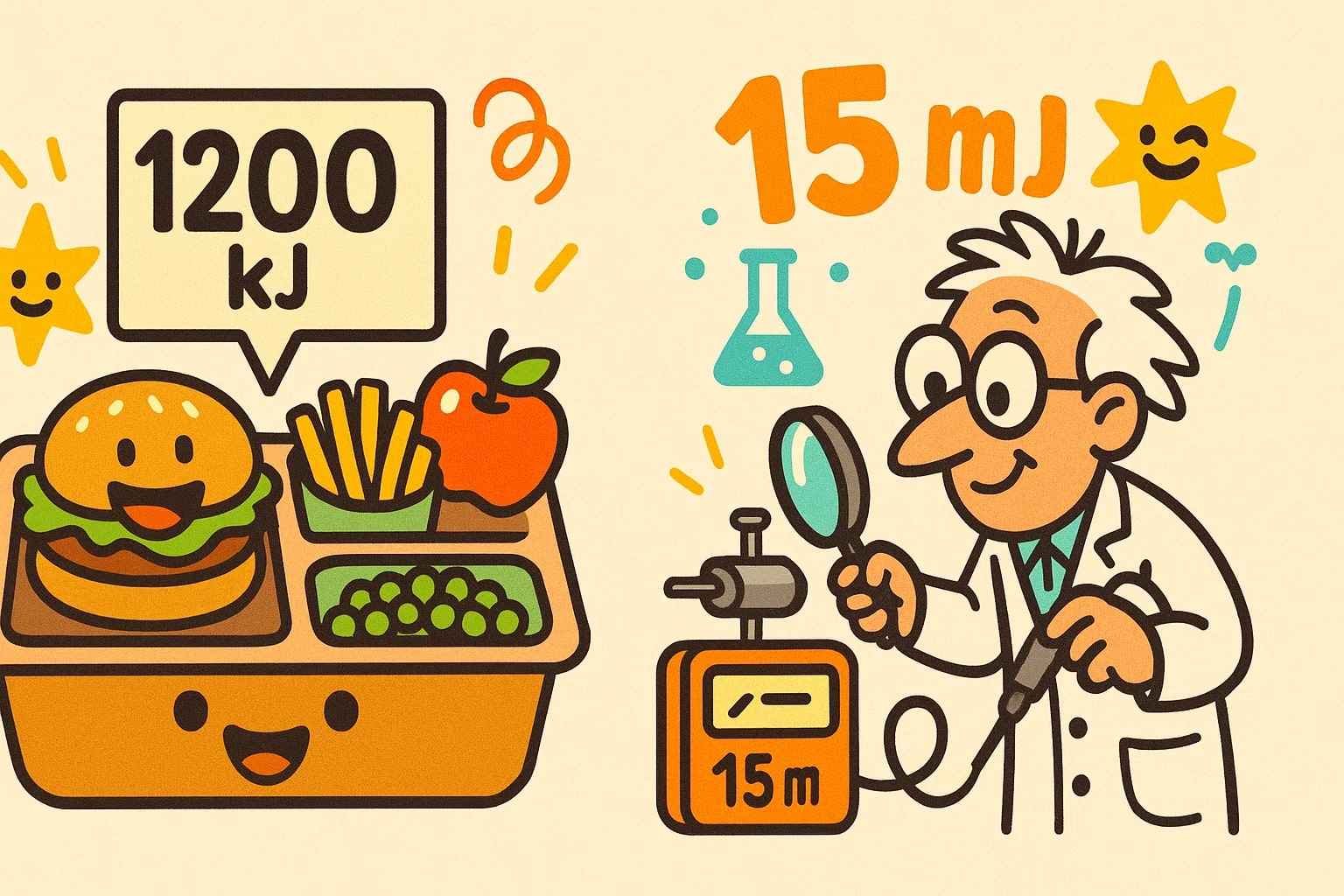Joule to Millijoule – How to convert J to mJ
When working with small energy events — from electronic circuits to laboratory tests — joules can feel oversized. Millijoules make those numbers practical, letting engineers, researchers, and technicians record energy without awkward decimals. Here’s how these two units compare, how to convert between them, and why both remain essential in science and industry.

Joules: the standard for energy
The joule (J) is the SI unit for energy, defined as the work done when a force of 1 N moves an object over 1 m. It’s also equal to 1 W·s, or 1/3 600 W·h. Joules show up in nearly every context — they quantify electricity consumption, mechanical work, and even the energy in food (usually displayed in kilojoules, or 1 000 J).
A single joule represents a noticeable amount of energy: lifting a 100 g object by one meter takes roughly 1 J. But in electronics and micro-mechanics, a joule is often too large to use conveniently.
Millijoules: a thousandth of a joule
A millijoule (mJ) is one-thousandth of a joule:
1 mJ = 1/1 000 J, or 1 J = 1 000 mJ.
Millijoules are widely used in electronics, laser research, and material testing. Small laser systems, for instance, often emit pulses measured in tens or hundreds of millijoules. In low-energy physics experiments, where data precision matters, millijoules let scientists avoid using tiny decimal fractions of joules.
How to convert J to mJ
Because the two units are linked by a factor of a thousand, the math is quick:
1 J = 1 000 mJ
Energy (mJ) = Energy (J) × 1 000
Example calculation:
A capacitor discharges 0.07 J of stored energy. Converting to millijoules:
0.07 J × 1 000 = 70 mJ.
So, the discharge equals 70 mJ.
Need other conversions too? Visit Conversion tools or use the dedicated Energy Converter for fast, precise results.
Did you know?
-
The joule is named for 19th-century physicist James Prescott Joule, whose experiments demonstrated that heat and mechanical work are interchangeable.
-
Many medical lasers used in dermatology deliver pulses between 20 mJ and 100 mJ, enough to treat tissue without excessive damage.
-
Millijoules are crucial in battery research, where discharge rates of micro-batteries are often tracked in 500 mJ to 5 000 mJ ranges.
-
A typical camera flash releases about 10–20 mJ of energy per burst, which is why millijoules are the preferred unit in photography and optics studies.
-
High-speed scientific cameras sometimes measure exposure energy in millijoules to correlate light levels with sensor calibration.
Measuring energy across scales
Although joules and millijoules measure the same physical quantity, their roles differ. A nutrition label might list 1 200 kJ for a meal — convenient shorthand for 1 200 000 J. Meanwhile, a lab testing micro-actuators may log data in 15 mJ increments to capture subtle performance changes without resorting to decimals like 0.015 J.
These conversions make it possible to move seamlessly between consumer-level energy figures and high-precision lab measurements without losing readability.

Wrap it up
Energy data can span from billion-joule outputs in power plants to millijoule pulses in experimental physics. Converting joules to millijoules isn’t just about scaling numbers — it’s about making results clear and useful.
Engineers, physicists, and designers rely on millijoules when dealing with low-energy processes, while joules remain the standard for broader calculations. For seamless unit switching, Jetcalculator’s Conversion tools and specialized Energy Converter ensure accurate, fast results.
From a single LED pulse to a precise laser array, the right unit makes reporting energy far easier.

